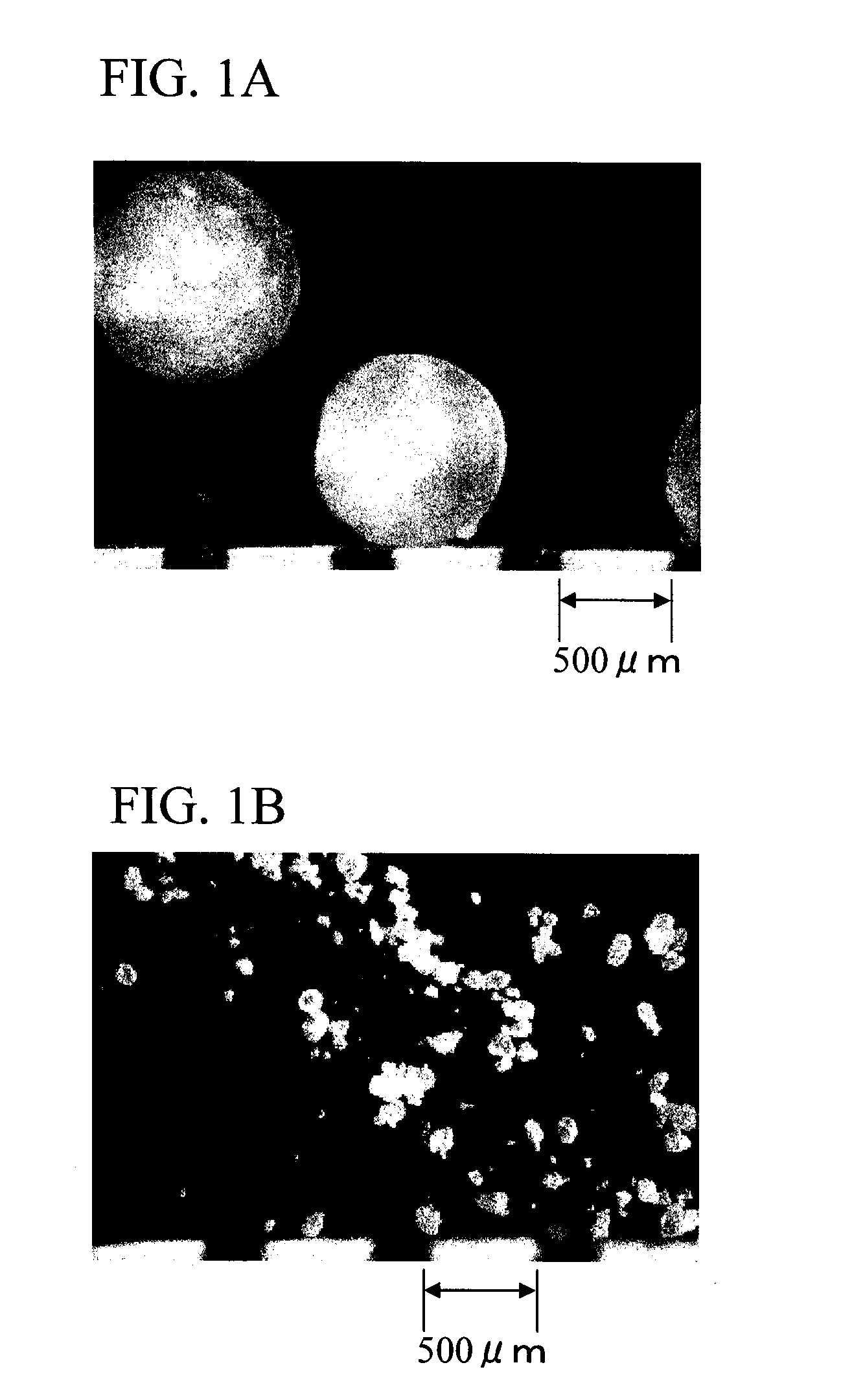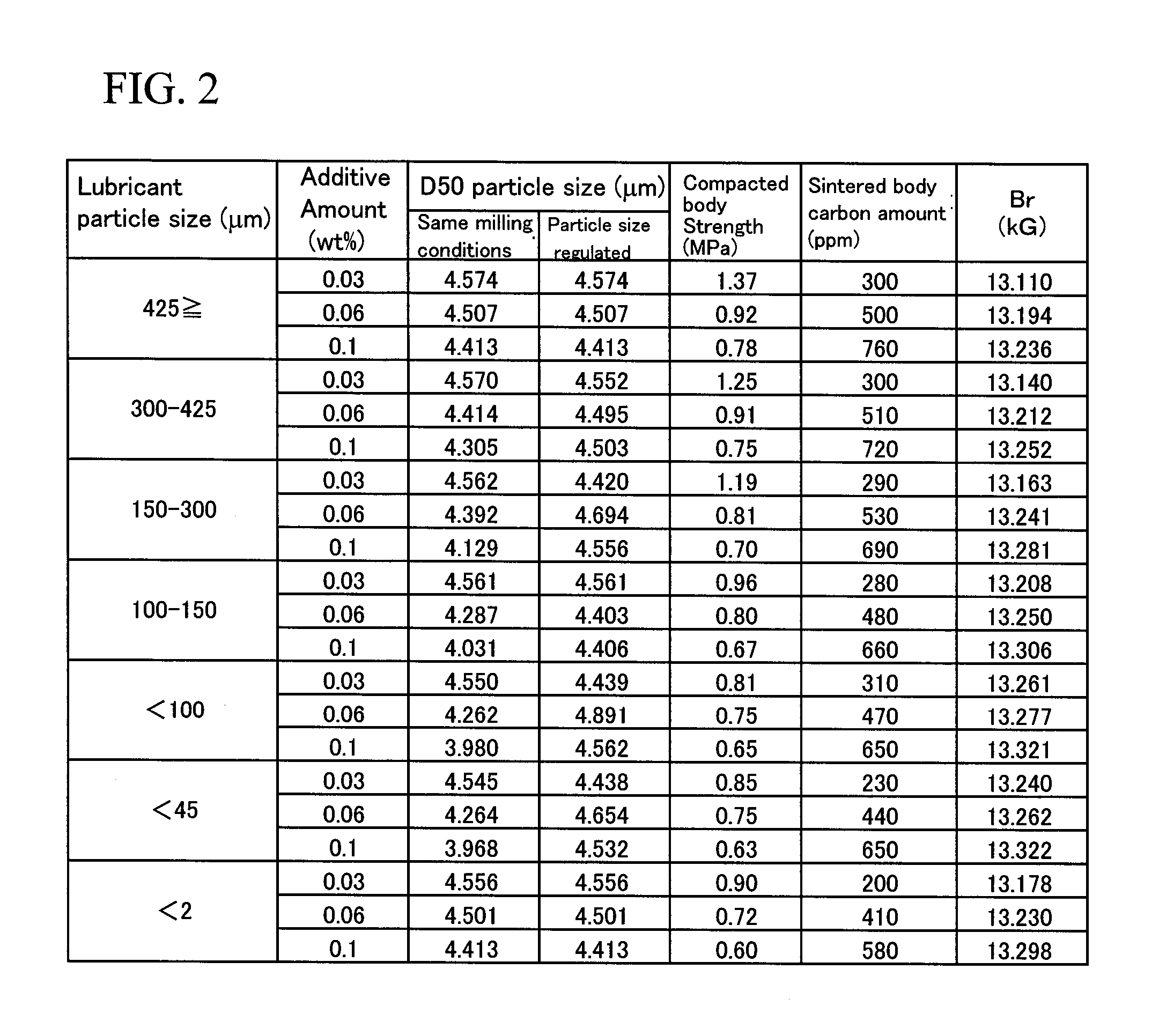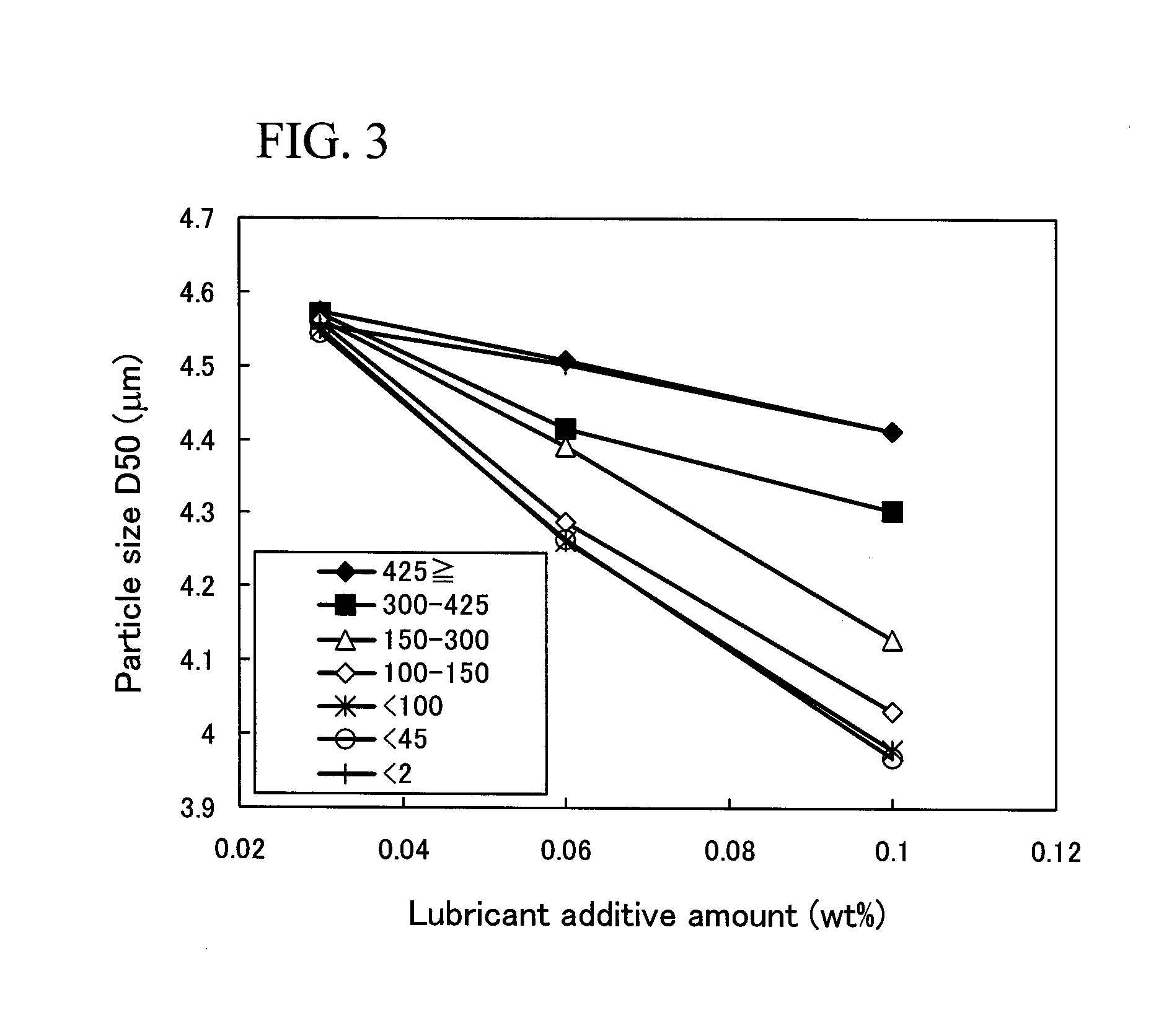Rare Earth Sintered Magnet, Raw Material Alloy Powder For Rare Earth Sintered Magnet, And Process For Producing Rare Earth Sintered Magnet
a raw material technology, applied in the field of rare earth sintered magnets, can solve the problems of coercive force, drop in mechanical strength, and danger of causing a drop in magnetic properties, and achieve the effects of high residual magnetic flux density, high orientation, and high dispersion state of carbon
- Summary
- Abstract
- Description
- Claims
- Application Information
AI Technical Summary
Benefits of technology
Problems solved by technology
Method used
Image
Examples
example 1
[0102] The influence of particle size of the lubricant added during the milling step was investigated. The results will be illustrated as Example 1.
[0103] The composition of the raw material alloy was 24.5% by weight of Nd, 6.0% by weight of Pr, 1.8% by weight of Dy, 0.5% by weight of Co, 0.2% by weight of Al, 0.07% by weight of Cu, 1.0% by weight of B and the balance being Fe. Metals or alloys which were to become the raw material were blended together so as to form the above-described composition, and the resultant raw material was melted and cast into a raw material alloy thin plate by strip casting. The obtained raw material alloy thin plate underwent hydrogen-pulverizing, and the resultant product was subjected to mechanical pulverizing using a Brown mill, whereby a pulverized powder was obtained.
[0104] This pulverized powder was charged with oleic amide as a lubricant. Subsequently, a milled powder was obtained using a jet mill.
[0105] As the lubricant added during the milli...
example 2
[0125] Next, the results of an investigation into the particle size of the raw material alloy (pulverized powder) which was subjected to milling and the particle size of the lubricant is illustrated as Example 2.
[0126] The composition of the raw material alloy was 24.5% by weight of Pr, 6.0% by weight of Dy, 1.8% by weight of Co, 0.5% by weight of Al, 0.2% by weight of Cu, 0.07% by weight of B, and the balance being Fe, and these materials were melted and cast into a raw material alloy thin plate by strip casting. The obtained raw material alloy thin plate underwent hydrogen-pulverizing, and the resultant product was subjected to mechanical pulverizing using a Brown mill, whereby a pulverized powder was obtained. The pulverized powder was formed as a flat sheet, had a thickness of about 100 to 300 μm and a size (length) of about 100 to 1,000 μm. The pulverized powder was classified using a sieve into sizes of 200 μm or more to less than 500 μm and 500 μm or more to less than 800 μm...
example 3
[0143] An R—Fe—B system sintered magnet was produced as described below.
[0144] Metals or alloys which were to become the raw material were blended together so as to form a composition consisting essentially of 24.5% by weight of Nd, 6.0% by weight of Pr, 1.8% by weight of Dy, 0.5% by weight of Co, 0.2% by weight of Al, 0.07% by weight of Cu, 1.0% by weight of B and the balance being Fe. The resultant raw material was melted and cast into a raw material alloy thin plate by strip casting. The obtained raw material alloy thin plate underwent hydrogen-pulverizing, and the resultant product was subjected to mechanical pulverizing using a Brown mill, whereby a pulverized powder was obtained.
[0145] This pulverized powder was charged with oleic amide as a lubricant. Subsequently, a milled powder was obtained using a jet mill.
[0146] As the lubricant charged during the milling, a plurality of kind shaving a differing particle size were prepared. Using commercially available oleic amide (Pr...
PUM
| Property | Measurement | Unit |
|---|---|---|
| flexural strength | aaaaa | aaaaa |
| particle size | aaaaa | aaaaa |
| mean particle size | aaaaa | aaaaa |
Abstract
Description
Claims
Application Information
 Login to View More
Login to View More - R&D
- Intellectual Property
- Life Sciences
- Materials
- Tech Scout
- Unparalleled Data Quality
- Higher Quality Content
- 60% Fewer Hallucinations
Browse by: Latest US Patents, China's latest patents, Technical Efficacy Thesaurus, Application Domain, Technology Topic, Popular Technical Reports.
© 2025 PatSnap. All rights reserved.Legal|Privacy policy|Modern Slavery Act Transparency Statement|Sitemap|About US| Contact US: help@patsnap.com



